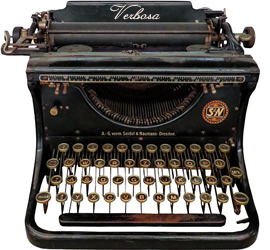In two sentences tell me what you have learned about writing recently.
Tag: writing
Monday Muddle: affect, effect
By far the most common uses of affect and effect are affect as a verb and effect as a noun. The memory trick I use to help keep them straight is that affect is an action and starts with A. A is for action. Effect is a consequence or end result. E is for end. And if you have trouble remembering which is which, I would recommend trying to avoid the less common versions.
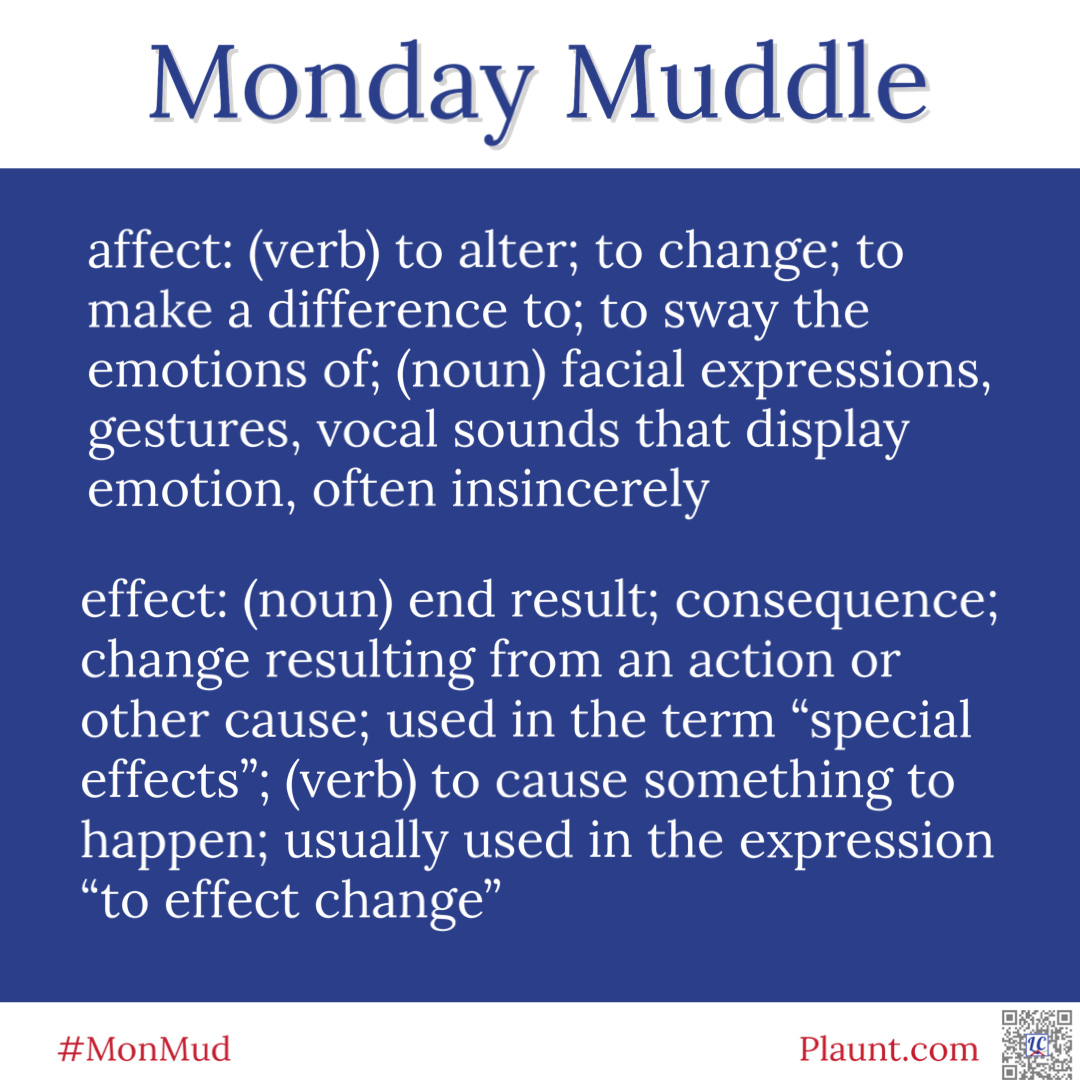
Monday Muddle: noting, nothing
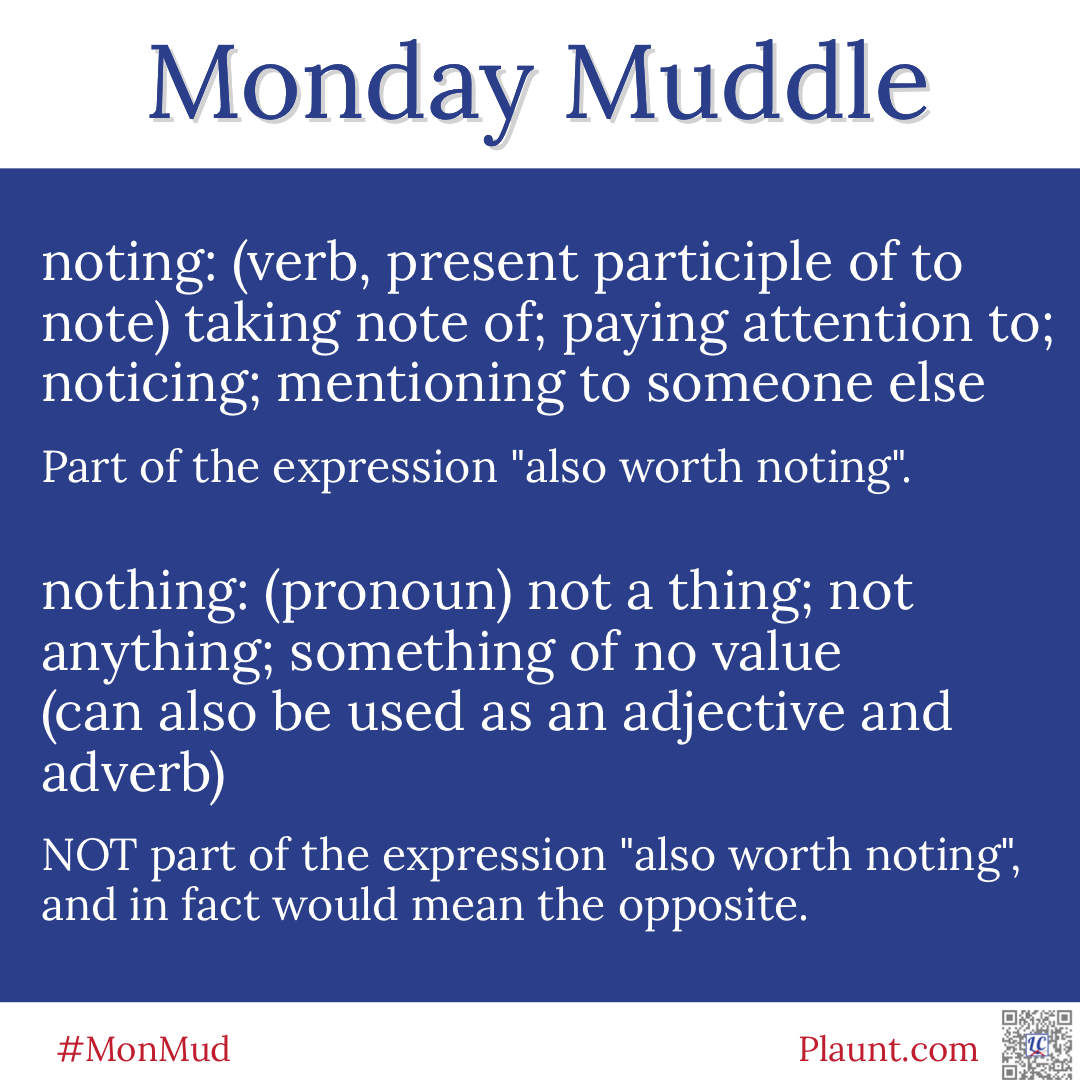
Tuesday Two
In two sentences tell me what you have learned about writing recently.
Monday Muddle: hummus, humus
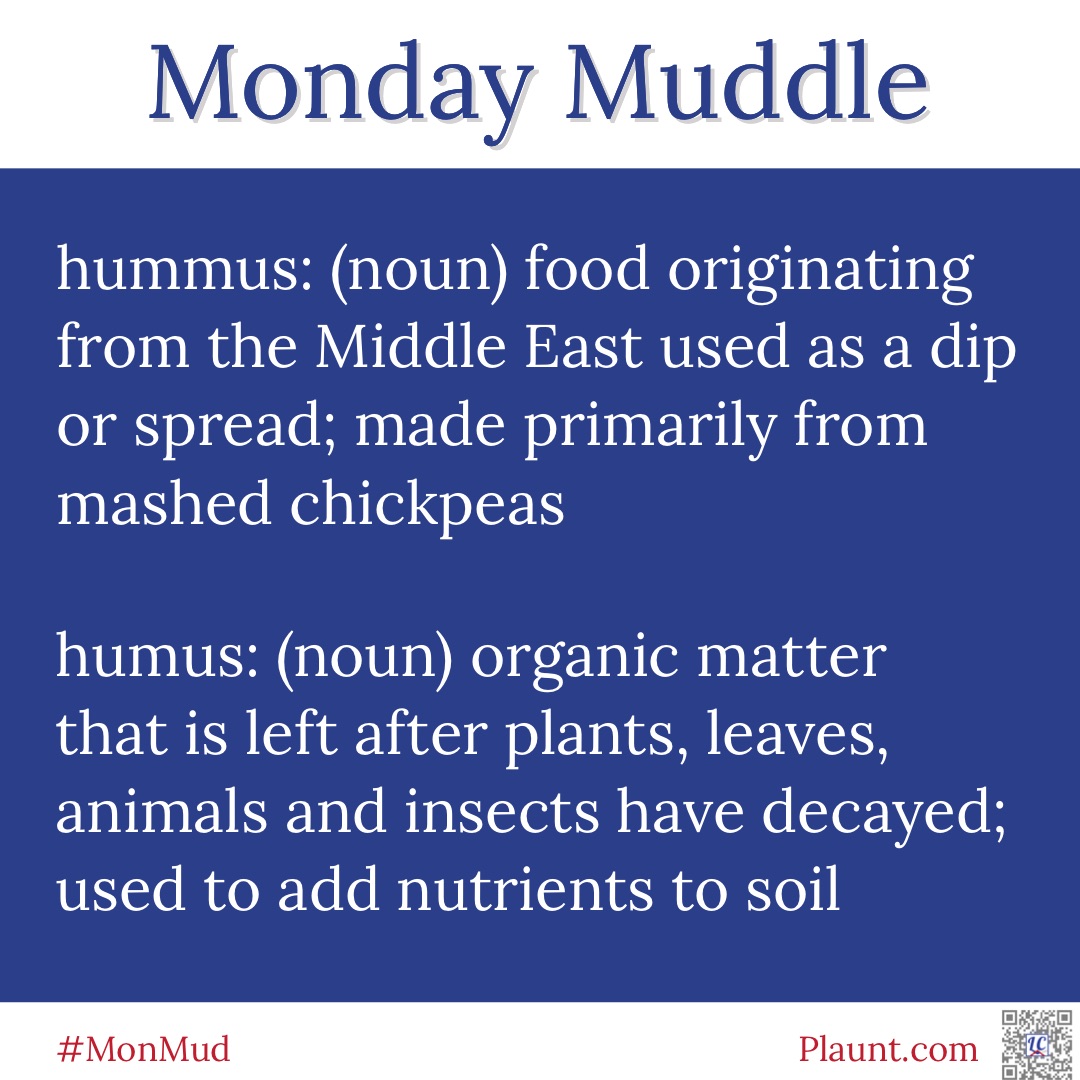
I enjoy hummus on pita bread. I don’t think I would like humus on pita bread. 😳
Monday Muddle: uncharted, unchartered
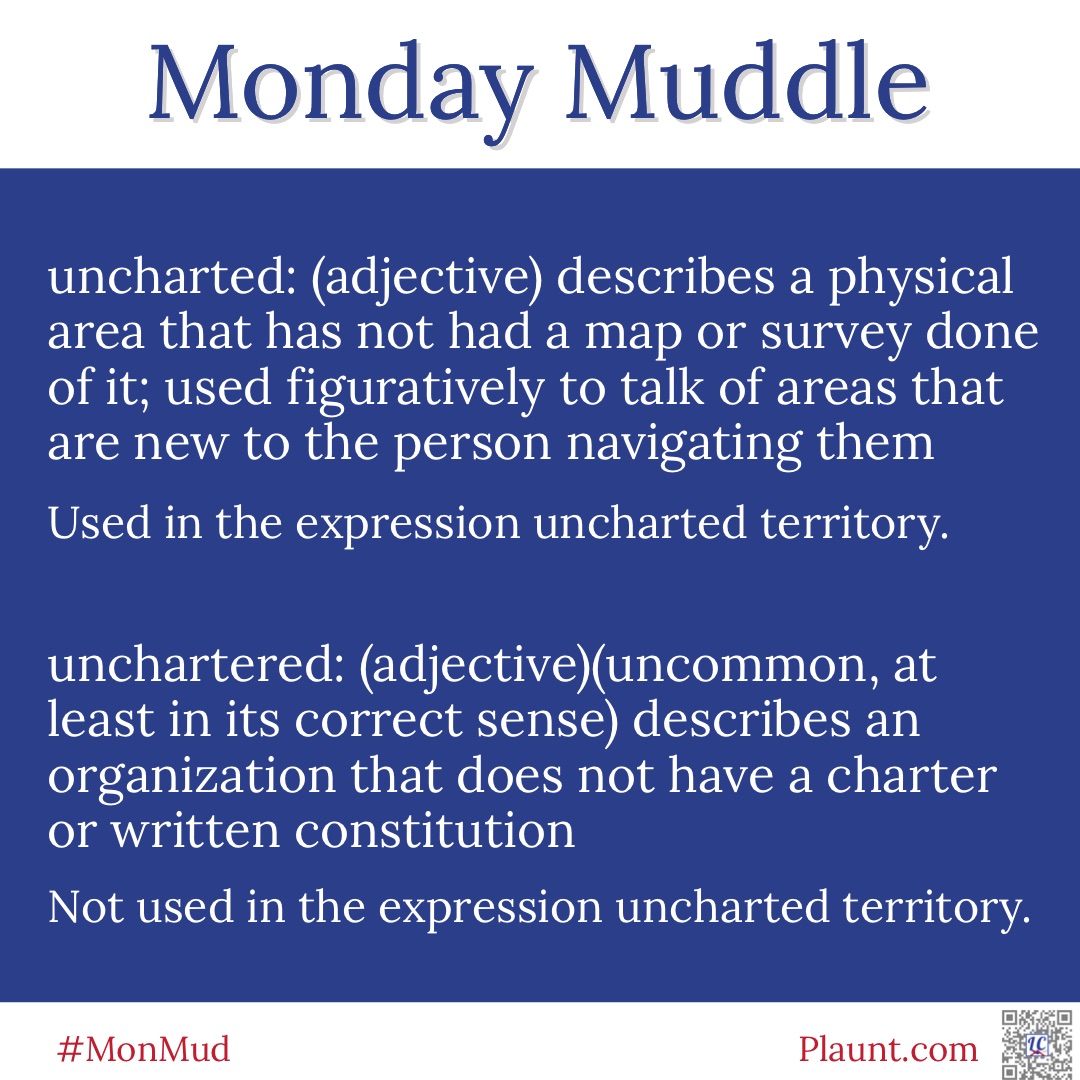
Chartered (adjective) can mean to have a charter or constitution, but it can also be used to describe a vehicle that has been rented, usually with the driver, for private tours.
The other day a friend asked me how long Gilligan’s trip was supposed to be. If you have no idea what I’m talking about, it’s okay; it just means you are young. (But if you ever need the answer for a trivia competition, it was a three hour tour.) Gilligan was working on a boat that was chartered. They may have ended up in uncharted waters, but because they were there, they were not unchartered waters.
Monday Muddle: fair, fare, fear
To fear better is not the same as to fare better.
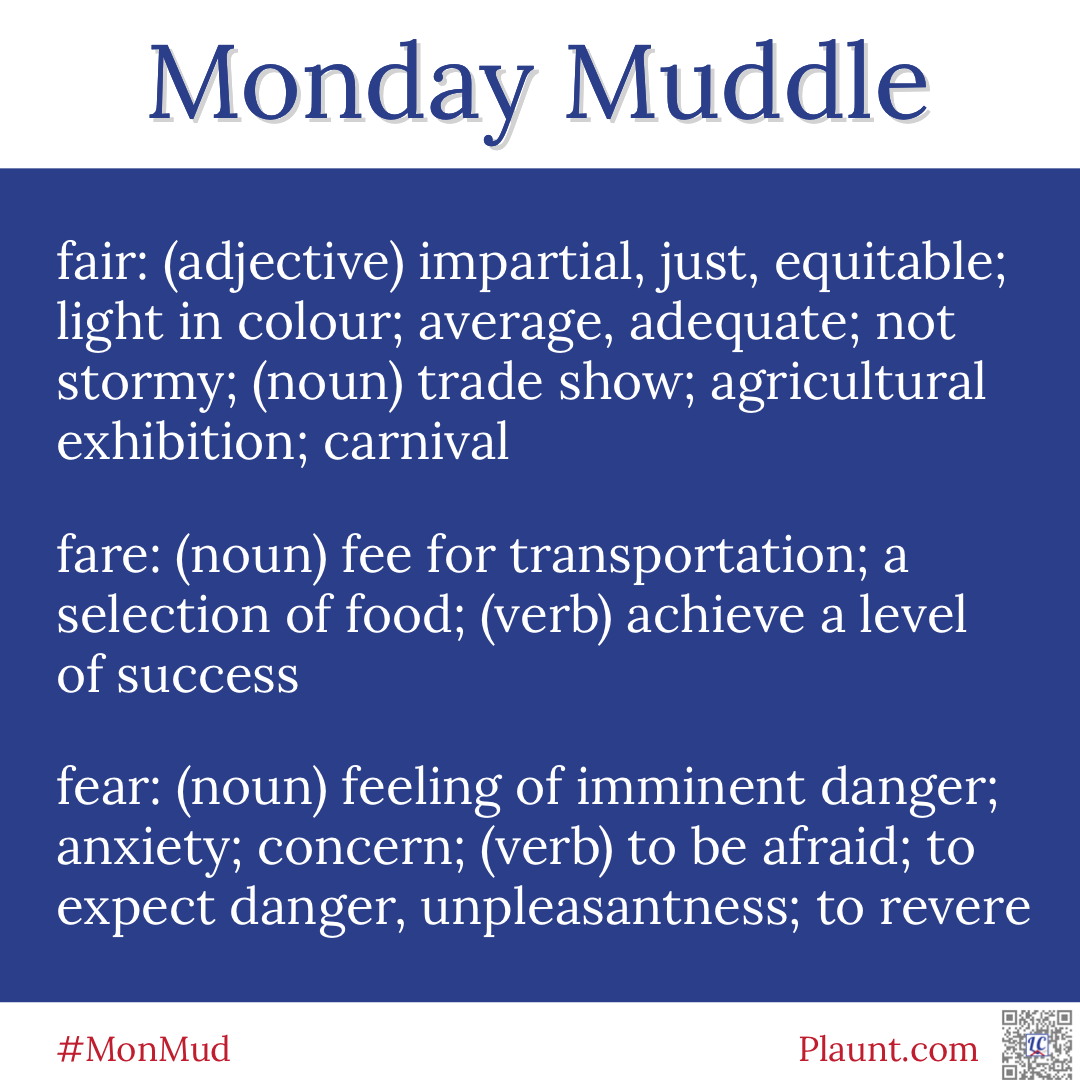
Monday Muddle: spilt, split
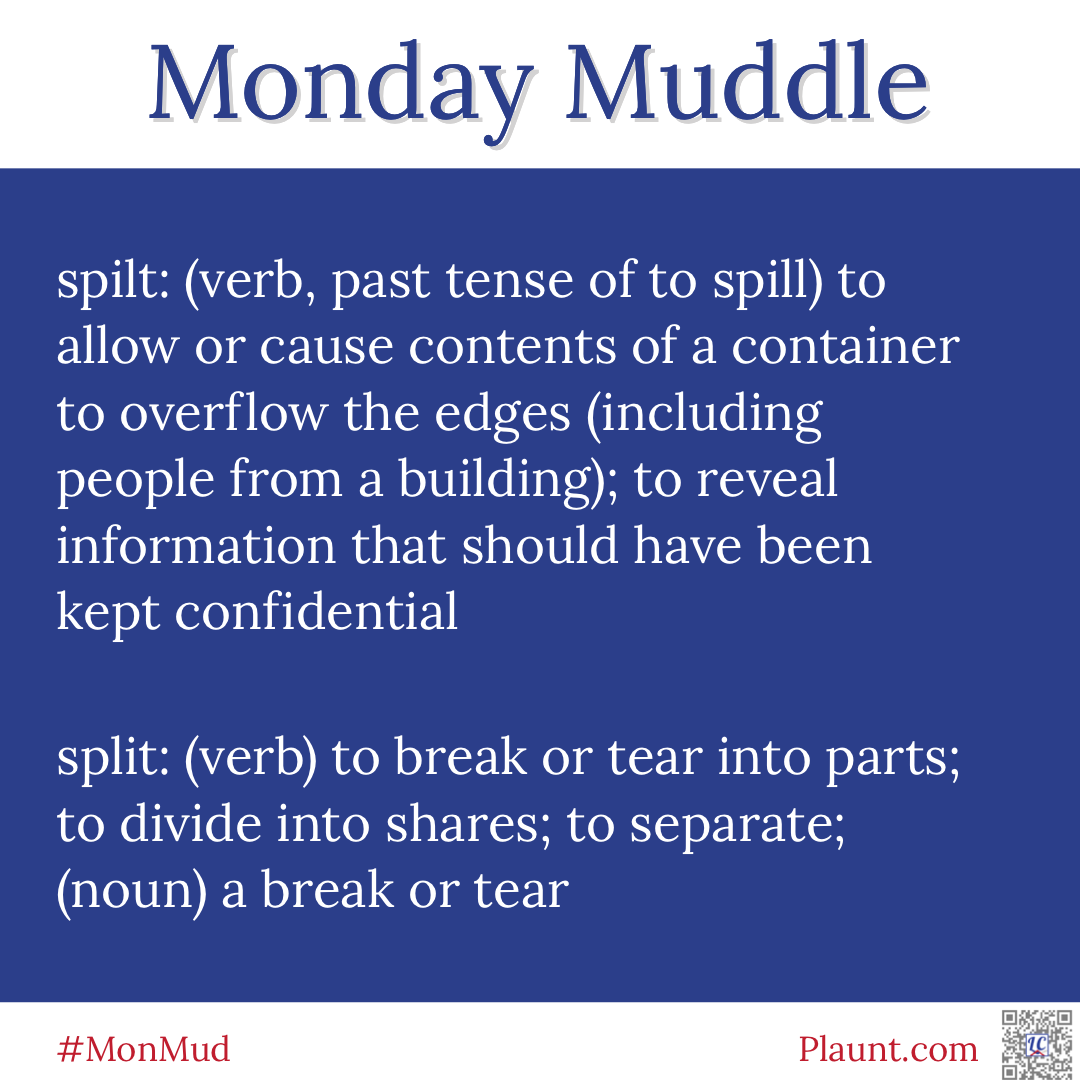
If a bag split, the contents would likely be spilt.
“Spilt” and “split” are also both past participles which can be used as adjectives. e.g. Split pea soup, whether you are a fan of it or not, is better than spilt pea soup.
“Spilt” is the original British past tense of “to spill”, and “spilled” is the American version. Although “spilt” is still acceptable in the United Kingdom, it is becoming less common, and “spilled” is gaining in popularity—as the past tense, not as a condition of soup.
Tuesday Two
In two sentences tell me what you have learned about writing recently.
Monday Muddle: fictional, fictitious, fictive
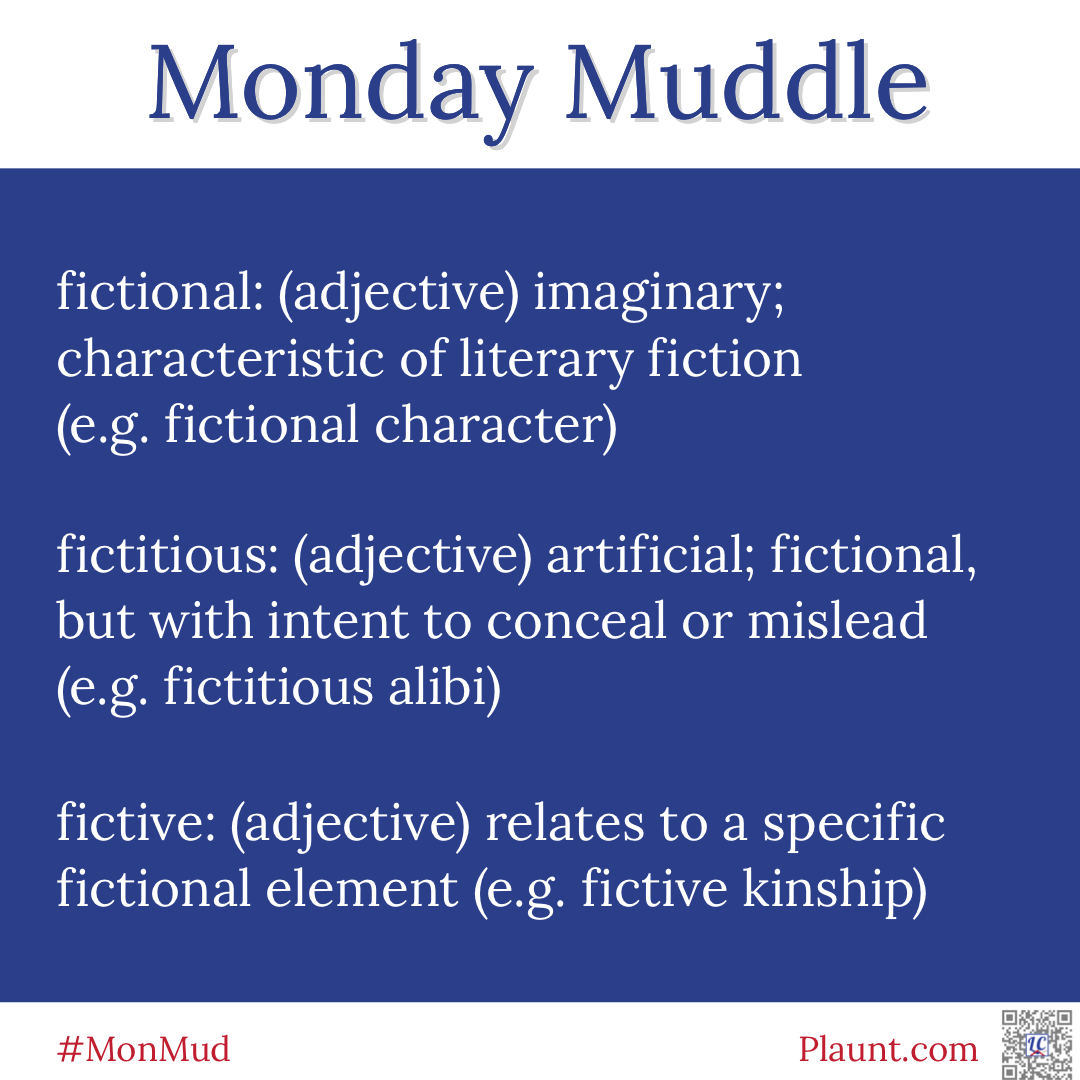
The meanings of these three words are very similar, and all relate to creations of the imagination. But there are some nuances. If it’s in a negative context—not being factual for the purpose of being deceptive—use “fictitious”. If you are discussing literature, use “fictional”. “Fictive” is less common than the other two, and is often used in the phrase “fictive kinship” which is a relationship based not on familial ties but on a close relationship. (e.g. when you call your mother’s best friend Aunt Sue)
